Current Affairs – 7 March 2024
Frontier Technology Lab
Recently, Atal Innovation Mission (AIM), NITI Aayog and Meta have announced the launch of Frontier Technology Labs (FTLs).
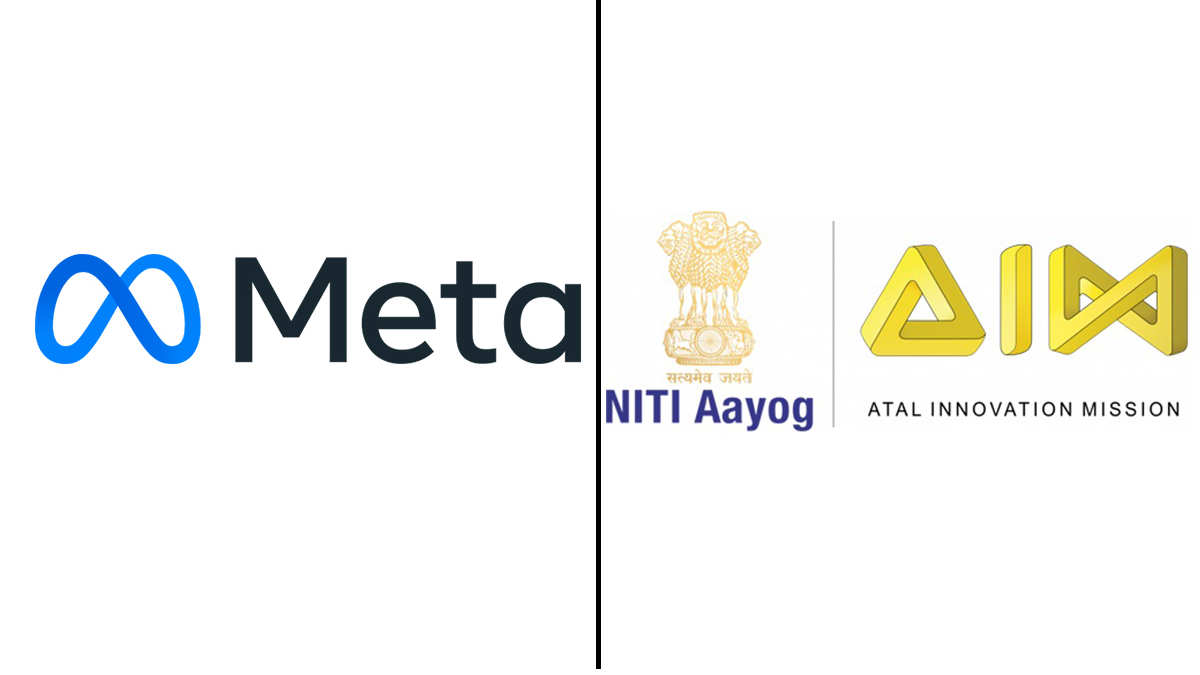
About Frontier Technology Lab:
- It is an advanced version of Atal Tinkering Lab. It aims to advance the government’s agenda of digital inclusion, skilling and growth.
- Collaboration: Atal Innovation Mission and Meta will partner to set up FTLs in schools of strategic importance to ensure that students from diverse backgrounds across India will have equal opportunities to learn and engage with frontier technologies.
- Funding: The FTLs will be funded by Meta and Atal Innovation Mission will be the knowledge partner.
- It is equipped with state-of-the-art infrastructure, including all components of the Tinkering Lab to empower students to innovate using technologies like Artificial Intelligence, Augmented & Virtual Reality, Blockchain, Cybersecurity, Robotics, 3D Printing and Internet of Things.
- Significance: The labs support the Government’s focus on equipping youth with digital skills to succeed in the evolving landscape of technology and the global economy.
Majuli masks
Recently, the traditional Majuli masks and Majuli manuscript painting in Assam were given a Geographical Indication (GI) tag.

About Majuli masks:
- These are handmade masks traditionally used to depict characters in bhaonas, or theatrical performances with devotional messages under the neo-Vaishnavite tradition, introduced by the 15th-16th century reformer saint Srimanta Sankardeva.
- Srimanta Sankardeva established this art of masks through a play called Chinha Jatra.
- The masks can depict gods, goddesses, demons, animals and birds — Ravana, Garuda, Narasimha, Hanuman, Varaha Surpanakha all feature among the masks.
- They can range in size from those covering just the face (mukh mukha), to those covering the whole head and body of the performer (cho mukha).
- Material used: The masks are made of bamboo, clay, dung, cloth, cotton, wood and other materials available in the riverine surroundings of their makers
- Traditional practitioners are working to take the art out of their traditional place in sattras, or monasteries, and give them a new, contemporary life.
- Sattras are monastic institutions established by Srimanta Sankardev and his disciples as centres of religious, social and cultural reform.
Key facts about Majuli manuscript painting
- It is a form of painting — also originating in the 16th century — done on sanchi pat, or manuscripts made of the bark of the sanchi or agar tree, using homemade ink.
- The earliest example of an illustrated manuscript is said to be a rendering of the Adya Dasama of the Bhagwat Purana in Assamese by Srimanta Sankardev.
- This art was patronised by the Ahom kings. It continues to be practised in every sattra in Majuli.
Section 319 of the Code of Criminal Procedure (CrPC)
Supreme Court of India recently rendered a landmark judgment clarifying the exercise of discretionary powers under Section 319 of the Code of Criminal Procedure (CrPC).
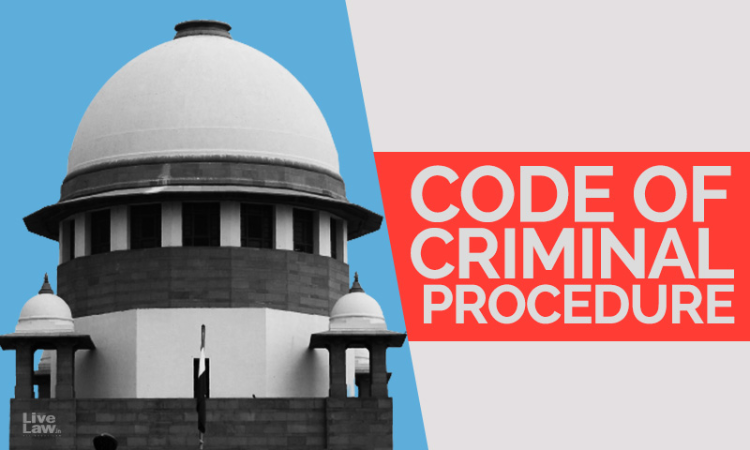
About Section 319 of the CrPC:
- It confers power on the Court to proceed against persons, other than those named as accused in the chargesheet, appearing to be guilty of offence.
- Section 319 CrPC finds its roots in this powerful doctrine, “Judex damnatur cum nocens absolvitor”, which means the judge is condemned when the guilty is acquitted.
- It conveys the significant principle that a wrongdoer must not be spared from the hands of justice.
- Essentials of Section 319 CrPC:
- Additional Accused Persons: Section 319 empowers the court to summon and try other persons, in addition to those already named as accused in the case, if it appears that they have also committed the offence being tried.
- Evidence During Trial: The court can exercise this power either on its own or based on an application by the prosecution or the defense.
- Sufficient Evidence: The court must have sufficient evidence against the additional accused persons to justify summoning them for trial.
- Opportunity to be Heard: Before summoning any additional accused, the court should provide them with an opportunity to be heard.
- Joined in the Same Trial: The additional accused will be tried along with the original accused. There will be a separate trial if court finds it necessary.
- Protection of Rights: The rights and safeguards available to the original accused, also extend to the additional accused.
- Discretion of the Court: The decision to summon additional accused persons rests on the discretion of the court. However, the Supreme Court held that
- It should be employed sparingly and when the situation clearly calls for it.
- Only when there is clear and convincing evidence against a person in the evidence provided to the court should this power be used, and not arbitrarily or carelessly.
‘NITI For States’ Platform
Minister of Communications, Railways, and Electronics & Information Technology will launch NITI Aayog’s NITI For States platform and Viksit Bharat Strategy Room.

About NITI For States Platform:
- It is a cross-sectoral knowledge platform designed to become a Digital Public Infrastructure (DPI) for Policy and Good Governance.
- The significant features of the platform include
- A multi-sectoral live repository of Best Practices, Policy documents, datasets, data profiles and NITI publications.
- The knowledge products on the platform span 10 sectors including Agriculture, Education, Energy, Health, Livelihoods and Skilling, Manufacturing, MSME, Tourism, Urban, Water resources & WASH across two cross-cutting themes – Gender and Climate Change.
- The platform is an intuitive and user-friendly interface that allows users to easily navigate; and it is accessible through multiple devices including mobile phones.
- This platform will facilitate the digital transformation of governance by equipping government officials with robust, contextually relevant, and actionable knowledge and insights, thereby enhancing the quality of their decision-making.
- It will also support cutting-edge level functionaries like district collectors and block-level functionaries by giving them access to innovative best practices across various States and UTs.
What is Viksit Bharat Strategy Room?
- It is an interactive space where users will be able to visualise data, trends, best practices and policies in an immersive manner allowing them to make a holistic assessment of any problem statement.
- It also allows user to interact through voice-enabled AI and connect to multiple stakeholders through video conferencing.
- It is designed to be a plug-and-play model to enable replication by states, districts and blocks.
- Various government organizations have collaborated in this initiative by NITI Aayog.
- It includes iGOT Karmayogi bringing online training modules called “SAMARTH” which can be accessed by the platform.
- NITI Aayog’s National Data and Analytics Platform (NDAP) has been integrated to give access to government data sets;
- National E-Governance Division (NeGD) has extended support to develop the first-of-its-kind Viksit Bharat Strategy Room while multi-lingual support has been provided by the Bhashini.
- PM Gatishakti BISAG-N team, with the support of DPIIT, has also been integrated providing for the geospatial tool for Area Based Planning.
India’s First Under-River Metro Tunnel
Prime Minister recently inaugurated a metro train service in Kolkata, marking the opening of India’s first under-river metro tunnel.
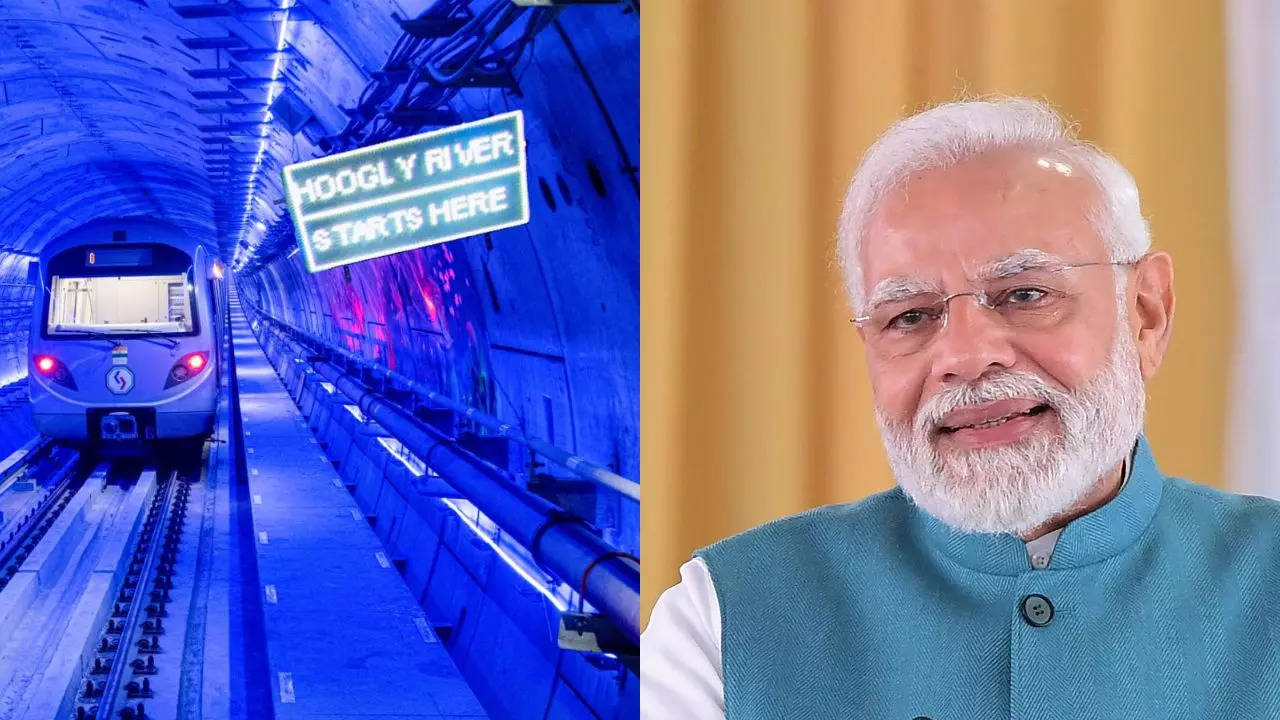
About India’s First Under-River Metro Tunnel:
- It is a part of Kolkata Metro’s East-West Corridor.
- It passes under the Hooghly River and forms part of section from Howrah Maidan to Esplanade.
- The stretch also has the deepest metro station in the country, the Howrah Maidan station, at 32 metres below ground level.
Key Facts about River Hooghly:
- The Hooghly River, also known as the Bhagirathi-Hoogly and Kati-Ganga Rivers, is one of the significant rivers in West Bengal. It is a distributary or arm of the Ganges River.
- Course:
- It is formed in Murshidabad, where the Ganga splits into two parts, while the part flowing through Bangladesh is called the Padma.
- The Hooghly River is silted up above Kolkata, and the river flows to the west and south to the estuary of Rupnarayan and then south and southwest to enter the Bay of Bengal through a 32-kilometer-wide estuary.
- The Hooghly’s majority of water comes from the Farakka Feeder Canal instead of natural water.
- The Farakka Barrage is a dam that diverts water from the Ganges into a canal near the town of Tildanga in Malda district. This supplies the Hooghly with adequate water even in the dry season.
- Haldi, Ajay, Damodar and Rupnarayan are the rivers that feed the lower reaches of the Hooghly.
- The important cities near the Hoogli River are Jiaganj, Azimganj, Murshidabad, and Baharampur.
Fourier’s Law
Scientists have discovered an exception to a 200-year-old Fourier’s Law that governs how heat diffuses through solid materials.
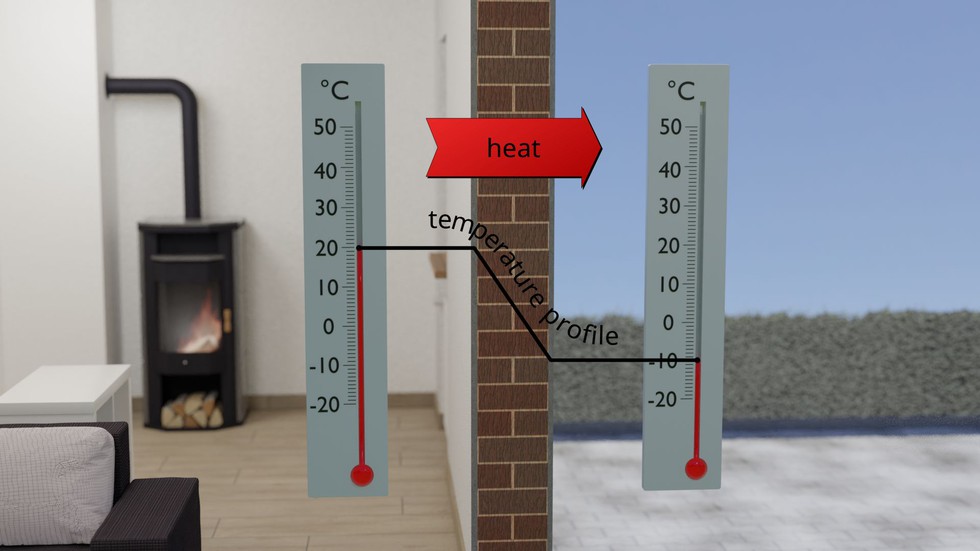
About Fourier’s Law:
- Fourier’s law, or Law of Heat Conduction, describes how heat is transferred, or conducted, through solid materials.
- As molecules vibrate and electrons shuttle about, the heat diffuses from the hotter end of an object to the colder end.
- It states that the rate of heat conduction through a plane layer is proportional to the temperature gradient across the layer and the heat transfer area of the layer.
- Basically, it is an empirical relation between the rate of heat conduction, heat transfer, and temperature gradient in the direction of heat flow.
- Formula: q = – k▽T, where,
- q is the heat flux, which is expressed as energy per unit area per unit time.
- k is the heat conductivity coefficient (thermal conductivity). The dimension is area per unit time, so typical units for expressing it would be m2/s.
- ∇T is the temperature gradient (K/m).
- The thermal conductivity of the material (k) is also known as the proportionality constant that is obtained in the formula. A high value of k denotes that the material is a good thermal conductor, and easily transfers energy through it.
What is Conduction?
- Conduction is the process by which heat energy is transmitted through collisions between neighboring atoms or molecules.
- Conduction occurs more readily in solids and liquids, where the particles are closer together, than in gases, where particles are further apart.
- Anything that involves direct physical contact to transfer heat is an example of conduction.
Star dunes
Scientists unveiled the first in-depth study of a star dune, revealing the internal structure of these geological features.
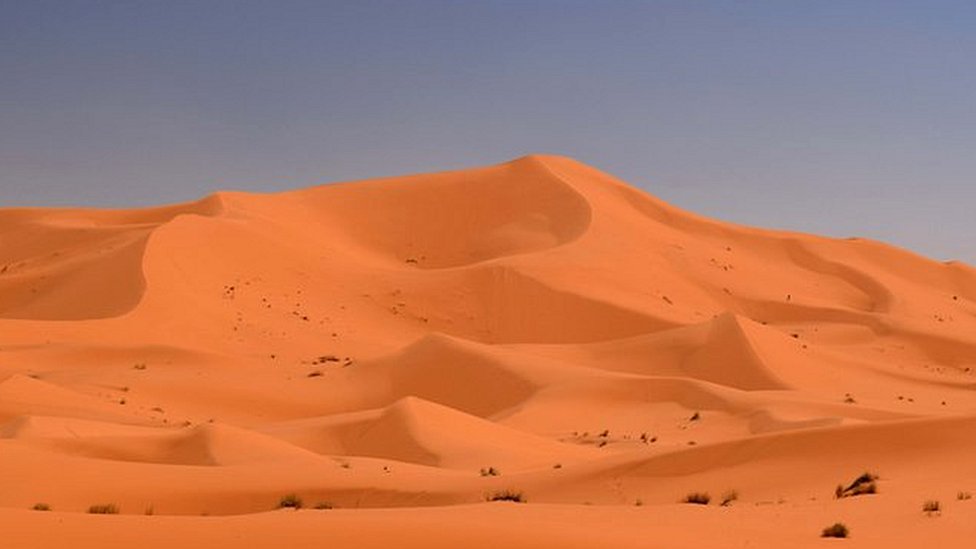
About Star dunes:
- Star dunes – or pyramid dunes – are named after their distinctive shapes and reach hundreds of metres in height.
- They are found in Africa, Asia and North America and also have been spotted on Mars and on Saturn’s large moon Titan.
- Star dunes make up just under 10% of the dunes in Earth’s deserts. These are the tallest ones, surpassing other types such as crescent-shaped barchan dunes and straight and lengthy linear dunes.
- These are formed in areas with complex wind regimes, where winds blowing from different directions and net sand accumulation, points within the desert where big piles of sand can be blown around to form giant dunes.
- Geographical distribution:
- Earth’s largest star dunes are found in the Badain Jaran desert in western China.
- Namib Sand Sea in Namibia, large sand seas in Algeria such as the Grand Erg Oriental and Grand Erg Occidental, and Rub’ al Khali in Saudi Arabia.
- In North America, Great Sand Dunes National Park in Colorado contains a series of them.
Recent research about Star dunes
- The research team from the UK have estimated the age of star dune of Lala Lallia in Morocco, for the first time.
- The scientists used a technique called luminescence dating to work out the age of the star dune. The method calculates when the grains of sand were last exposed to daylight.
Dying Declaration
The Supreme Court recently held that the conviction of the accused can be sustained solely based on the dying declaration if the declaration made by the victim inspires the confidence of the court and proves to be trustworthy.
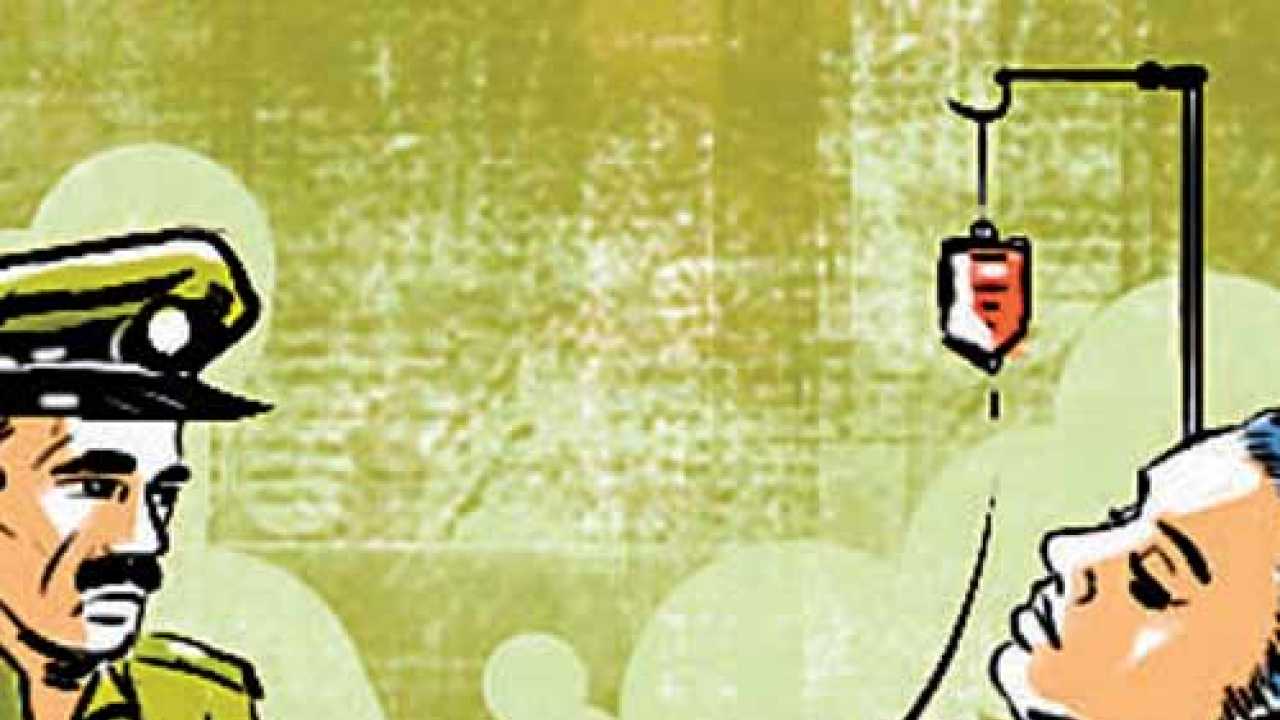
About Dying Declaration:
- A Dying Declaration is a statement made by a person who is dead. It is dealt with under clause (1) of Section 32 of the Indian Evidence Act 1872.
- Generally, it relates to the cause of death of the declarant. It is admissible as evidence in all proceedings, civil or criminal.
- The reason behind this can be followed by the Latin maxim ‘Nemo Mariturus Presumuntur Mentri’ which means that “Man Will Not Meet His Maker with Lying on His Mouth.
- Format:
- There is no specific format required for a dying declaration. It can be given orally, in writing, through gestures or signs, by a thumb impression, or even in the form of a question and answer.
- However, the statement must clearly and assertively convey the person’s intention. Ideally, a written declaration should be recorded using the exact words stated by the person making the statement.
- In cases where a magistrate records the dying declaration, it is usually done in a question-and-answer format. This allows the magistrate to gather maximum relevant information accurately.
- Who can record a Dying Declaration?
- The best form of declaration of dying would be the one recorded by the Magistrate.
- However, according to the Supreme Court’s guidelines, anyone can record the dying statement.
- A dying statement can also be recorded by public servants or by a doctor as well, where the victim is hospitalized.
- Evidentiary Value:
- A dying declaration carries significant weight in legal proceedings and can serve as the sole basis for a conviction without the need for additional corroborating evidence.
- However, the court must ensure that the statement of the deceased was not influenced, coached, or a result of imagination.
- It must also ascertain that the deceased was of sound mind and had a clear opportunity to observe and identify the assailants.
- If the person making the dying statement is likely to live, his statement is inadmissible as a dying statement.
International Centre of Excellence for Dams
The Ministry of Jal Shakti (MoJS) signed a Memorandum of Agreement (MoA) with the Indian Institute of Science (IISc) Bangalore for the establishment of an International Centre of Excellence for Dams (ICED).

About International Centre of Excellence for Dams:
- It will act as a technological arm of the Ministry to provide specialised technical support in investigations, modelling, research and innovations, and technical support services for the Indian and overseas dam owners.
- This MoA will remain valid for ten years or till the duration of the Dam Rehabilitation and Improvement Project (DRIP) Phase-II and III Scheme, whichever is earlier, from the date of signing this MoA.
- The Centre will work on dam safety to support the Ministry and provide solutions to various emerging challenges faced in dam safety through scientific research.
- It will also offer area specific academic courses (including training programs and workshops) and carry out applied research and technology transfer in dam safety
- Funding: The Ministry of Jal Shakti will provide a grant of 118.05 crore rupees for construction and modernisation of infrastructure for setting up and functioning of ICED.
- It will carry out research in two core areas
- Advanced construction and rehabilitation materials & Material testing for dams and
- Comprehensive (multi-hazard) risk assessment of dams
- ICED, IISc Bangalore is the second International Centre in the area of Dam Safety.
- The first ICED has been institutionalized at IIT Roorkee upon signing of MoA in February 2023.
INS Jatayu
The existing Naval Detachment Minicoy was upgraded to a naval base and commissioned as INS Jatayu.

- INS Jatayu Naval Base – It will have additional infrastructure such as an airfield, housing, and personnel.
- It will effectively be the country’s 2nd naval base in Lakshadweep.
Indian Navy’s 1st base on Minicoy is INS Dweeprakshak in Kavaratti, was commissioned in 2012. India has had a naval detachment in Minicoy since the 1980s.
- Objective – To incrementally augment security infrastructure at the strategic Lakshadweep Islands.
- Significance – Facilitate anti-piracy and anti-narcotics operations in the western Arabian Sea.
- Augment India’s capability as the 1st responder in the region.
- Counter the growing Chinese influence in the Indian Ocean Region.
Recently, India and Mauritius jointly inaugurated an airstrip and a jetty that India has built on the Mauritian island of Agaléga off the coast of Africa in the western Indian Ocean.
- Challenges – The fragile ecology of the island may pose challenges for the construction of a jetty (an extension from land out into water).
|
The Lakshadweep Islands & its Importance |
|
Trisonic Wind Tunnel (TWT)
Recently, 3 major space infrastructure projects of ISRO was inaugurated which includes a Trisonic Wind Tunnel at Vikram Sarabhai Space Centre (VSSC) at Thumba in Kerala.
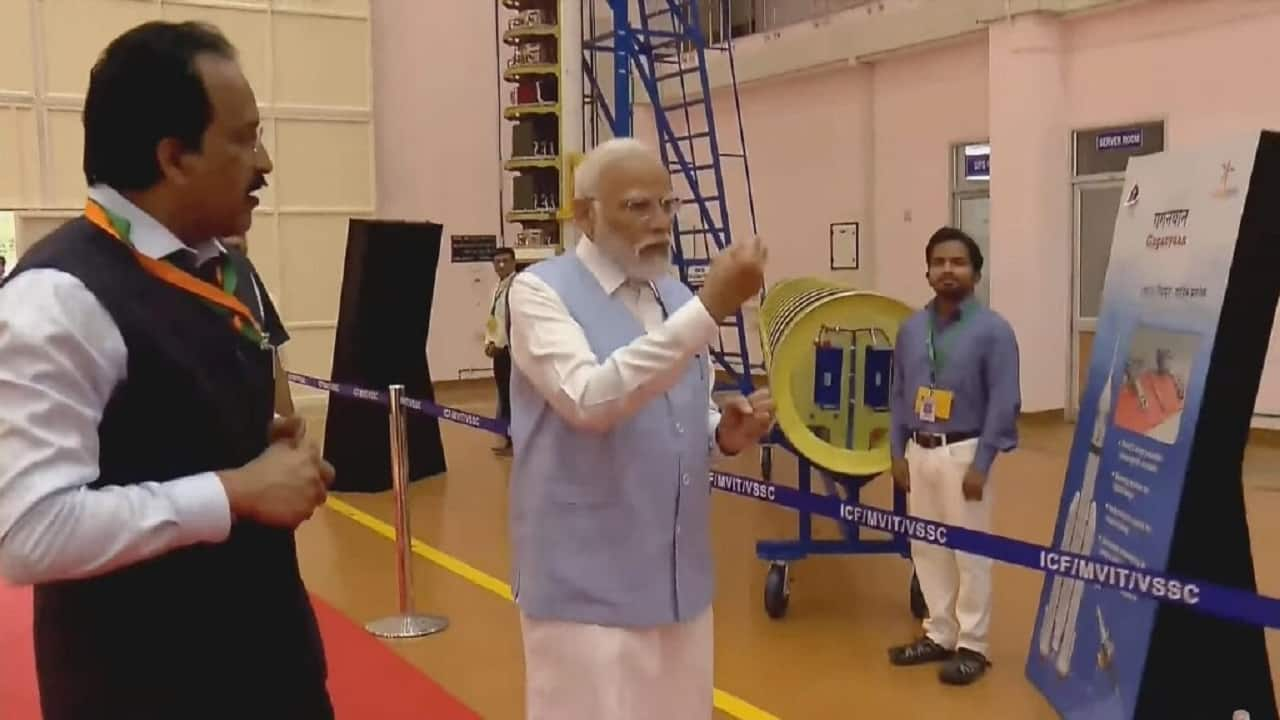
- TWT – A unique wind tunnel capable of simulating 3 distinct flight regimes, so the name trisonic
- Subsonic – Below the speed of sound
- Transonic – At the speed of sound
- Hypersonic – Above the speed of sound
- Aim – To test the aerodynamic performance of scaled-down models of rocket and re-entry spacecrafts under various atmospheric conditions.
- Features – It is a 1.2 metre TWT, a state-of-the-art facility and the first of its kind in India.
- It is 160 metres in length with a diameter of 5.4 metres.
- It can simulate flight conditions from 0.2 times the speed of sound (68 m/s) to 4 times the speed of sound (1360 m/s).
- It also contains different sections for different velocity regimen of wind.
- It produces controlled uniform airflow to evaluate aerodynamic characteristics and designs by evaluating forces, moments, load distribution, unsteady pressures, acoustic levels etc.
- Improves design and efficiency – It helps in optimizing the design of rockets and spacecraft, leading to enhanced performance and fuel efficiency.
- Reduce Development costs – It provides a cost-effective alternative to expensive, real-world flight testing, allowing ISRO to iterate and refine designs more efficiently.
- Position India at the forefront – India is also one of only 3 countries to have a wind tunnel that can produce hypersonic speeds after the US and France.
- Atmanirbhar Bharat – Fully conceived by ISRO and executed through Tata Projects and is a classic example of Make in India.
- It will provide self-reliance for the end-to-end design of various upcoming launch projects.
The TWT at VSSC is India’s 3rd hypersonic wind tunnel (HWT) after the DRDO’s Hypersonic Wind Tunnel at the APJ Abdul Kalam Missile Complex in Hyderabad, and the 1.2 metre TWT at National Aerospace Laboratories in Bengaluru.
|
Wind Tunnels |
|
Chandrayaan-4
ISRO is gearing up for the next lunar mission ‘Chandrayaan-4’, to build on the accomplishments of Chandrayaan-3 mission (2023) while attempting more complex objectives.

- Aim – To land on the Moon and also return rocks and soils (lunar regolith) from the lunar surface to India.
- 5 spacecraft modules – Like Chandrayaan-3 it takes lander, rover and the propulsion module along with 2 additional components to return the samples from the Moon.
- Propulsion Module – Similar to Chandrayaan-3, the propulsion module will guide Chandrayaan-4 in lunar orbit, before separating.
- Descender Module – It will make the lunar landing, similar to the Vikram lander on Chandrayaan-3.
- Ascender Module – Once the samples are collected and stored, the ascender module will eject from the lander and begin returning.
- Transfer Module – It will grab the ascender module and getting it out of lunar orbit and will journey back to Earth before the capsule with the rock and soil samples detach.
- Re-entry Module – This will be the capsule carrying the lunar regolith that will land on Earth.
- 2 separate launches – It is the 1st mission involving 2 launch vehicles aimed at completing a single mission.
- LVM-3 – It will launch with 3 components (Propulsion Module, the Descender Module and the Ascender Module).
- Polar Satellite Launch Vehicle (PSLV) – It will launch the Transfer Module and the Re-entry Module.
LVM-3 is India’s heaviest launch vehicle.
If successful, Chandrayaan-4 will make India only the 4th nation to bring back samples from the lunar surface.
Global Great Backyard Bird Count (GBBC) 2024
India records 1,036 species for backyard bird count — third highest globally.

GBBC
- The GBBC was launched in 1998, in the USA and was initially restricted to the USA only.
- GBBC is a citizen-driven scientific project aimed at counting and reporting the details of birds in the area of their neighborhood.
- It was an initiative of Cornell Lab of Ornithology and the National Audubon Society of USA.
- In 2013, it took the global stage turning into a global bird census.
- GBBC India is the Indian implementation of the global Great Backyard Bird Count, which runs for 4 days every February.
- Indian birders have participated in the GBBC since the event went worldwide in 2013.
- GBBC India is coordinated by the Bird Count India collective, a coming-together of a number of groups and organisations that are interested in birds, nature and conservation.
Indian bird enthusiasts celebrated their 12th consecutive year of participation in the GBBC this time.
e-bird
- eBird is an online database of birds with online real-time data about distribution and abundance.
- Started in 2002 and was initially restricted to western hemisphere only.
- Its geographical extension grew over time and in 2010 it got a global status.
GBBC 2024
- India submitted the second-highest number of checklists and the third-highest species among all participating countries.
- Kerala recorded the highest number of checklists (14,023), followed by Tamil Nadu (13,661) and Maharashtra (5,725).
- West Bengal reported the highest number of species (538), followed by Uttarakhand (426) and Assam (420).
This is the first GBBC where birders from all states and Union territories participated.
- Some restricted-range species spotted by Indian birders this year are:
- Andaman Serpent-Eagle,
- Andaman Woodpecker,
- Nilgiri Laughingthrush,
- White-headed Starling,
- Nilgiri Sholakili,
- White-bellied Blue Flycatcher,
- Andaman Treepie,
- Forest Owlet,
- Bugun Liocichla & White-bellied Sholakili
Piyush Goyal launches ‘e-Kisan Upaj Nidhi’ to ease farmers’ warehousing logistics
Union Minister for Consumer Affairs, Food & Public Distribution, Commerce and Industry, and Textiles, Shri Piyush Goyal, launched the ‘e-Kisan Upaj Nidhi’ (Digital Gateway) of the Warehousing Development and Regulatory Authority (WDRA) in New Delhi. This initiative is poised to become a cornerstone in India’s journey to becoming a developed nation, ‘Viksit Bharat’, by 2047, with agriculture as its foundational pillar.

Enhancing Warehousing Logistics for Farmers
- During the launch ceremony, Shri Goyal expressed his gratitude towards the Indian farmers for their pivotal role in sustaining the nation. He emphasized that the ‘e-Kisan Upaj Nidhi’ initiative would leverage technology to simplify warehousing logistics for farmers, ensuring they receive fair prices for their produce. In a significant policy shift aimed at benefiting the farming community, especially the small farmers, Shri Goyal announced a reduction in the security deposit charges at WDRA-registered warehouses from 3% to 1%.
Digital Gateway: A Stepping Stone for Attractive Farming
- Shri Goyal highlighted the ‘Digital Gateway’ initiative as an essential step in making agriculture more appealing to farmers. By providing a no collateral, extra security deposit policy, ‘e-Kisan Upaj Nidhi’ aims to prevent distress sales, where farmers are compelled to sell their harvest at lower prices due to inadequate post-harvest storage facilities.
Quality Assurance and Infrastructure Upgrade
- The minister stressed the importance of WDRA’s role in ensuring the quality and security of the warehouses. With mandatory registration for warehouses utilized by the Food Corporation of India (FCI) and a roadmap for state warehouses to upgrade their infrastructure, WDRA is set to enhance the overall storage ecosystem. Shri Goyal also revealed plans for the world’s largest cooperative food grain storage scheme, aiming to provide free registration for all godowns under the cooperative sector.
Simplifying the Storage Process
- ‘e-Kisan Upaj Nidhi’ simplifies the digital process for farmers to store their produce in registered WDRA warehouses for six months at an interest rate of 7% per annum. This initiative, alongside e-NAM, is designed to offer farmers the benefits of an interconnected market, far beyond the traditional government procurement at Minimum Support Prices (MSP). The government’s procurement through MSPs has notably increased 2.5 times over the past decade, underscoring the commitment to support the farming community.
|
Other Important Topics |
|
| International Centre of Excellence for Dams (ICED) | |
Ministry of Jal Shakti recently signs Agreement with Indian Institute of Science, Bangalore for the establishment of ICED.
|
|
| ‘NITI for States’ Platform | |
Minister of Communications, Railways, and Electronics & Information Technology to launch NITI Aayog’s ‘NITI for States’ Platform.
|
|
| ‘CSpace’ platform | |
Chief Minister of Kerala will launch the ‘CSpace’ platform at the Kairali theatre in Thiruvananthapuram, Kerala.
|
|
| Dolutegravir | |
A recent report by the World Health Organization (WHO) highlighted that the Resistance to the dolutegravir (DTG) drug is increasing among HIV patients.
|
|
| Gray Whale (Eschrichtius robustus) | |
Grey Whale, that vanished from the Atlantic Ocean, spotted again after more than 200 years.
|
|
| Artifical Glaciers in Tian-Shan mountains | |
|
|
| Geothermal blanket | |
Venezuela has embarked a project to preserve its final glacier, La Corona, by deploying a geothermal blanket recently.
|
|
| World Poverty Clock | |
The latest data of World Poverty Clock showed India has managed to bring down ‘extreme poverty’ below 3% of its population.
|
|
| Exercise Samudra Laksamana | |
The 3rd edition of Exercise Samudra Laksamana is underway recently off Visakhapatnam.
|
|
| e-Kisan Upaj Nidhi | |
Ministry of Consumer Affairs, Food and Public Distribution has recently launched ‘e-Kisan Upaj Nidhi’.
|




